Small-Format Aerial
Photography
Principles, Techniques and Geoscience
Applications

James S. Aber
Earth Science Department
Emporia State University
Kansas, United States
Irene Marzolff
Department of Physical Geography
Johann Wolfgang Goethe University
Frankfurt am Main, Germany
Johannes B. Ries
Physical Geography
University of Trier
Trier, Germany

Elsevier
Radarweg 29, PO Box 211, 1000 AE Amsterdam, The Netherlands
Linacre House, Jordan Hill, Oxford OX2 8DP, UK
First edition 2010
Copyright 2010 Elsevier B.V. All rights reserved
No part of this publication may be reproduced, stored in a retrieval system or transmitted in any form or by any means electronic, mechanical, photocopying, recording or otherwise without the prior written permission of the publisher
Permissions may be sought directly from Elseviers Science & Technology Rights Department in Oxford, UK: phone (+44) (0) 1865 843830; fax (+44) (0) 1865 853333; email: , and selecting Obtaining permission to use Elsevier material
Notice
No responsibility is assumed by the publisher for any injury and/or damage to persons or property as a matter of products liability, negligence or otherwise, or from any use or operation of any methods, products, instructions or ideas contained in the material herein.
British Library Cataloguing in Publication Data
A catalogue record for this book is available from the British Library
Library of Congress Cataloging-in-Publication Data
A catalog record for this book is available from the Library of Congress
ISBN: 978-0-444-53260-2
For information on all Elsevier publications visit our website at books.elsevier.com
Printed and bound in The Netherlands
10 11 12 10 9 8 7 6 5 4 3 2 1

Dedication
James Aber dedicates his contributions for this book to Susan W. Aber, wife and close colleague, who has assisted with kite and blimp aerial photography throughout the United States and Europe. Her kite flying and photographic skills resulted in many of the images presented in this book, identified as SWA in figure captions.
Preface
Photography has the remarkable power to impress into memory a distillation of a particular segment of time.
L. Schwarm (Schwarm and Adams, 2003)
Why small-format aerial photography? This question is often posed to us by people who work on the ground as well as those who analyze conventional aerial photographs and satellite images. Why indeed?
The authors did not start their small-format aerial photography (SFAP) careers as dedicated kite flyers, hot-air blimp developers, UAV fans, or do-it-yourself gadget builders. We have become aerial photographers out of necessity, because we needed to assess landscapes, forms, and distribution patterns in detail and document their changes through time. We required a feasible, cost-effective method that would adapt to the size of the features, the transitory nature of their occurrence, and the speed of their development, and which would yield the best possible spatial and temporal resolutions for the respective research questions. Suitable conventional photographs and satellite images were either inappropriate or unavailable.
Self-made aerial photographs offer the researcher a maximum of flexibility in fieldwork. Within the technical limits of the camera and platform, the photographer may determine not only place and time but also viewing angle, image coverage, and exposure settings. While imagery acquired from external sources may or may not show the study site at the required scale, time and angle, such tailor-made photos show exactly those sites and features we seek.
Small-format aerial photography also represents a way to enter a realm of airspace that is normally difficult or impossible to access via more traditional and accepted means, namely the ultra-low height range, just a few hundred meters above the ground. This height range is restricted for conventional manned aircraft in many countries and is too high to reach via ladders, booms, or towers in most situations. It is possible, in fact, that ultra-low SFAP is the least utilized means for observing the Earth from above. In this respect, SFAP is a way to bridge the gap in scale and resolution between ground observations and imagery acquired from conventional manned aircraft and satellite sensors.
SFAP enables researchers as well as other professionals and the interested public to get their own picture of the world. Large-scale aerial photographs in many cases help to state more precisely the scientific question, to improve the understanding of processes and to deepen the knowledge of our study sites. This enables us to monitor local changes at the spatial and temporal scales at which they occur and to assess their roles and importance in a constantly changing world. In some cases, we might even learn something altogether new.
We began our SFAP efforts in the age of film cameras. Since then, digital photography has revolutionized both field and laboratory methods. It is possible now to examine the results of an aerial survey within a few minutes after landing or even during the flight. Thus, the survey may be continued and further images can be taken if necessary. Likewise, digital image-processing techniques allow many more methods for laboratory analysis and interpretation of the aerial photographs.
The authors would like to share with the reader their experiences gained during many successful operations with different platforms, but also by some failures due to technical deficiencies and human errors. We feel confident that SFAP also would help other scientists and all those interested in pursuing their own questions and applications, and we hope this book may lead to greater knowledge, application, elaboration, and appreciation of small-format aerial photography, particularly in the geosciences, as well as many other human endeavors.
This book is divided into three major portions. Part I covers introductory material, including history, scope and definitions, basic principles, photogrammetry, lighting and atmospheric conditions, and photographic composition (). Many of these applied examples are drawn from the authors own field work in the United States, Europe, and Africa.
Acknowledgements
This book represents contributions from many individuals and organizations that have encouraged and supported the authors and helped us to pursue small-format aerial photography. Among those who have played significant roles, we thank our colleagues, collaborators and advisors: Kiira Aaviksoo, Ali At Hssaine, Klaus-Dieter Albert, DeWayne Backhus, Andrzej Ber, Michael Breuer, Karl-Ludwig Busemeyer, Cornelius Claussen, Don Distler, Lukas Distler, Debra Eberts, Maite Echeverra Arnedo, Jack Estes, Wolfgang Feller, Anja Fengler, Joachim Feuchter, Melinda Flohr, Darek Ga zka, Rafael Gimnez, Marco Giardino, Maria Grska-Zabielska, Ralph Hansen, Jrgen Heckes, Gnter Hell, Juraj Janoko, Jill Johnston, Paul Johnston, Martin Khler, Volli Kalm, Edgar Karofeld, Stephan Kiefer, Brooks Leffler, David Leiker, Kham Lulla, Holger Lykke-Andersen, Marco Koch, Michael Niesen, Matt Nowak, Firooza Pavri, Robert Penner, Jean Poesen, Juan de la Riva Fernndez, Michael Runzer, Tilmann Sauer, Marcia Schulmeister, Manuel Seeger, Rod Sobieski, Hans-Peter Thamm, Cheryl Unruh, Friedrich Weber, Heribert Willger, Joachim Wolff, Jrgen Wunderlich, and Ryszard Zabielski.
zka, Rafael Gimnez, Marco Giardino, Maria Grska-Zabielska, Ralph Hansen, Jrgen Heckes, Gnter Hell, Juraj Janoko, Jill Johnston, Paul Johnston, Martin Khler, Volli Kalm, Edgar Karofeld, Stephan Kiefer, Brooks Leffler, David Leiker, Kham Lulla, Holger Lykke-Andersen, Marco Koch, Michael Niesen, Matt Nowak, Firooza Pavri, Robert Penner, Jean Poesen, Juan de la Riva Fernndez, Michael Runzer, Tilmann Sauer, Marcia Schulmeister, Manuel Seeger, Rod Sobieski, Hans-Peter Thamm, Cheryl Unruh, Friedrich Weber, Heribert Willger, Joachim Wolff, Jrgen Wunderlich, and Ryszard Zabielski.


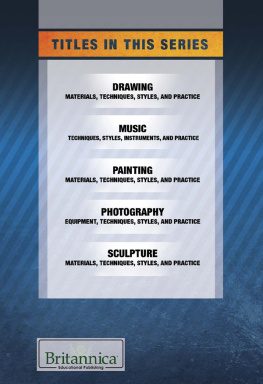
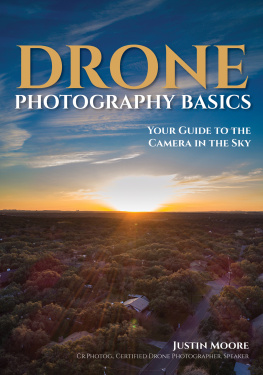


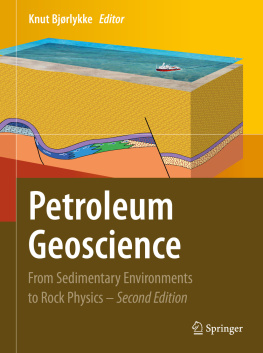
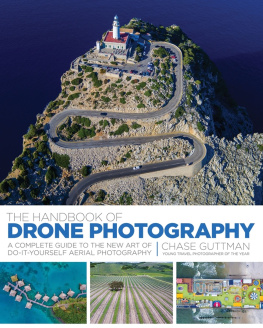
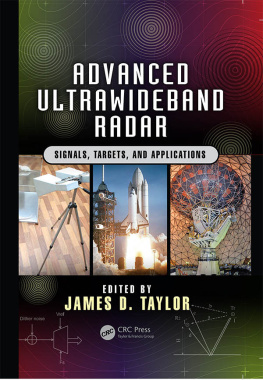



 zka, Rafael Gimnez, Marco Giardino, Maria Grska-Zabielska, Ralph Hansen, Jrgen Heckes, Gnter Hell, Juraj Janoko, Jill Johnston, Paul Johnston, Martin Khler, Volli Kalm, Edgar Karofeld, Stephan Kiefer, Brooks Leffler, David Leiker, Kham Lulla, Holger Lykke-Andersen, Marco Koch, Michael Niesen, Matt Nowak, Firooza Pavri, Robert Penner, Jean Poesen, Juan de la Riva Fernndez, Michael Runzer, Tilmann Sauer, Marcia Schulmeister, Manuel Seeger, Rod Sobieski, Hans-Peter Thamm, Cheryl Unruh, Friedrich Weber, Heribert Willger, Joachim Wolff, Jrgen Wunderlich, and Ryszard Zabielski.
zka, Rafael Gimnez, Marco Giardino, Maria Grska-Zabielska, Ralph Hansen, Jrgen Heckes, Gnter Hell, Juraj Janoko, Jill Johnston, Paul Johnston, Martin Khler, Volli Kalm, Edgar Karofeld, Stephan Kiefer, Brooks Leffler, David Leiker, Kham Lulla, Holger Lykke-Andersen, Marco Koch, Michael Niesen, Matt Nowak, Firooza Pavri, Robert Penner, Jean Poesen, Juan de la Riva Fernndez, Michael Runzer, Tilmann Sauer, Marcia Schulmeister, Manuel Seeger, Rod Sobieski, Hans-Peter Thamm, Cheryl Unruh, Friedrich Weber, Heribert Willger, Joachim Wolff, Jrgen Wunderlich, and Ryszard Zabielski.